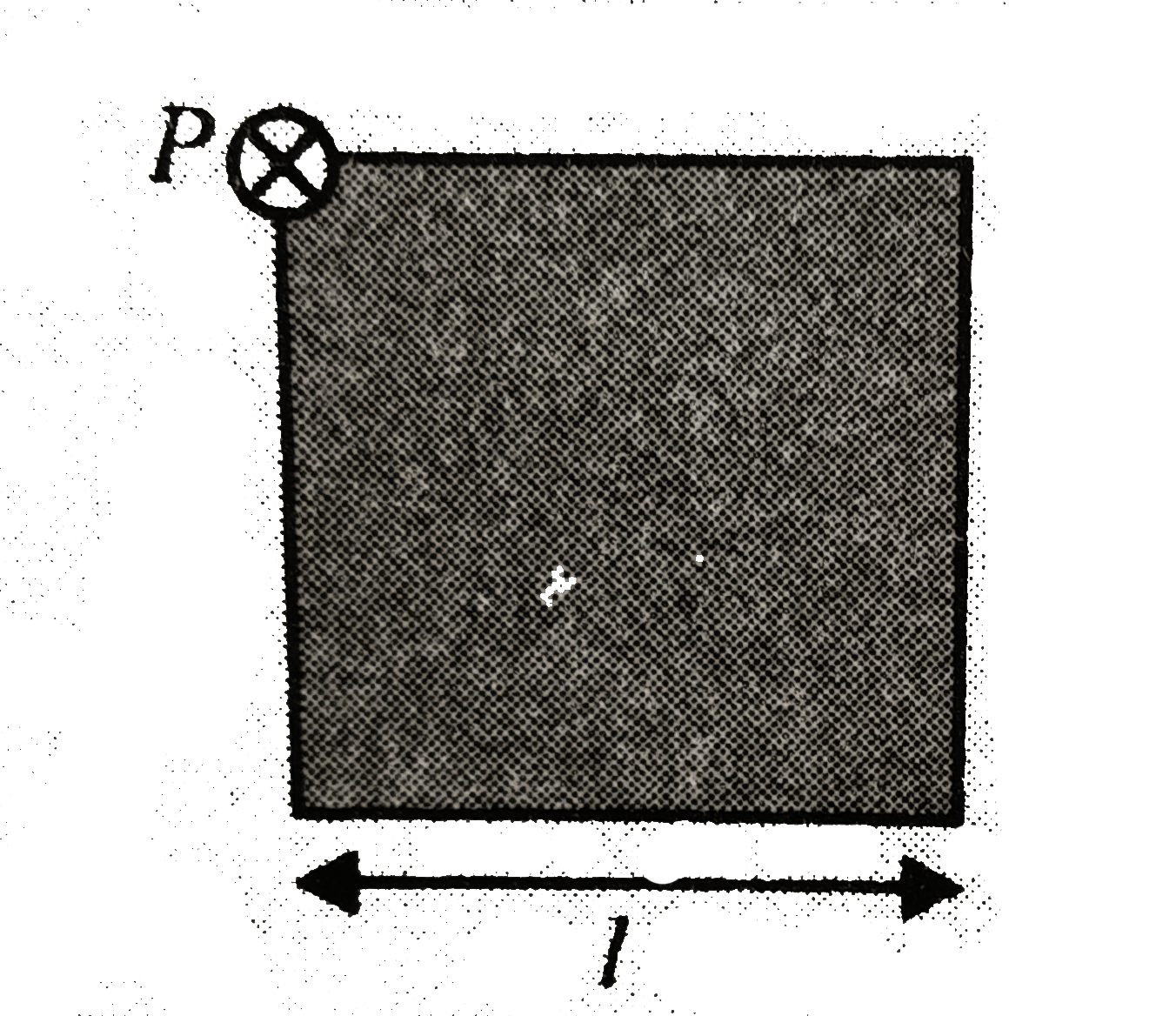The moment of inertia of a thin uniform rod of mass M and length L about an axis passing through its mid-point and perpendicular to its length isI0. Its moment of inertia about an axis passing through one of its ends perpendicular to its length is.
I0+ML2/4
I0+2ML2
I0+ML2
I0+ML2/2
The correct Answer is:a
To solve the problem of finding the moment of inertia of a thin uniform rod about an axis passing through one of its ends and perpendicular to its length, we can follow these steps:
1. Understand the Given Information:
- We have a thin uniform rod of mass M and length L.
- The moment of inertia about an axis passing through its midpoint and perpendicular to its length is given as I0.
2. Identify the Required Moment of Inertia:
- We need to find the moment of inertia I1 about an axis passing through one of its ends and perpendicular to its length.
3. Use the Parallel Axis Theorem:
- The Parallel Axis Theorem states that:
\(
I = I_{cm} + Mh^2
\)
where:
- \(I\) is the moment of inertia about the new axis,
- \(I_{cm}\) is the moment of inertia about the center of mass axis,
- \(M\) is the mass of the object,
- \(h\) is the distance between the two axes.
4. Determine the Values:
- Here, the moment of inertia about the center of mass (midpoint) is I0.
- The distance \(h\) from the center of mass to the end of the rod is \(L/2\).
5. Substitute the Values into the Parallel Axis Theorem:
- Now we can substitute the known values into the equation:
\(
I_1 = I_0 + M \left(\frac{L}{2}\right)^2
\)
6. Simplify the Expression:
- Calculate \(M \left(\frac{L}{2}\right)^2\):
\(
M \left(\frac{L}{2}\right)^2 = M \frac{L^2}{4}
\)
- Therefore, the moment of inertia about the end of the rod becomes:
\(
I_1 = I_0 + \frac{ML^2}{4}
\)
7. Final Result:
- Thus, the moment of inertia of the rod about the end is:
\(
I_1 = I_0 + \frac{ML^2}{4}
\)
- We have a thin uniform rod of mass M and length L.
- The moment of inertia about an axis passing through its midpoint and perpendicular to its length is given as I0.
- We need to find the moment of inertia I1 about an axis passing through one of its ends and perpendicular to its length.
- The Parallel Axis Theorem states that:
\(
I = I_{cm} + Mh^2
\)
where:
- \(I\) is the moment of inertia about the new axis,
- \(I_{cm}\) is the moment of inertia about the center of mass axis,
- \(M\) is the mass of the object,
- \(h\) is the distance between the two axes.
- Here, the moment of inertia about the center of mass (midpoint) is I0.
- The distance \(h\) from the center of mass to the end of the rod is \(L/2\).
- Now we can substitute the known values into the equation:
\(
I_1 = I_0 + M \left(\frac{L}{2}\right)^2
\)
- Calculate \(M \left(\frac{L}{2}\right)^2\):
\(
M \left(\frac{L}{2}\right)^2 = M \frac{L^2}{4}
\)
- Therefore, the moment of inertia about the end of the rod becomes:
\(
I_1 = I_0 + \frac{ML^2}{4}
\)
- Thus, the moment of inertia of the rod about the end is:
\(
I_1 = I_0 + \frac{ML^2}{4}
\)
Similar Questions
The moment of inertia of a thin uniform rod about an axis passing through its centre and perpendicular to its length is I0. What is the moment of inertia of the rod about an axis passing through one end and perpendicular to the rod ?
View SolutionThe moment of inertia of a cube of mass M and edge length a about an axis passing through one of its edge is
View Solution
Knowledge Check
The radius of gyration of an uniform rod of length l about an axis passing through one of its ends and perpendicular to its length is.
Al√2Bl3Cl√3Dl2
Moment of inertia of a uniform rod of length L and mass M, about an axis passing through L/4 from one end and perpendicular to its length is
View SolutionMoment of inertia of a uniform rod of length L and mass M, about an axis passing through L/4 from one end and perpendicular to its length is
View SolutionMoment of inertia of a thin rod of mass m and length l about an axis passing through a point l/4 from one end and perpendicular to the rod is
View Solutionfind the radius of gyration of a rod of mass m and length 2l about an axis passing through one of its ends and perpendicular to its length.
View SolutionFind the moment of inertia of a uniform square plate of mass M and edge of length 'l' about its axis passing through P and perpendicular to it.

View SolutionCalculate the moment of inertia of a ring of mass 2kg and radius 2cm about an axis passing through its centre and perpendicular to its surface.
View SolutionCalculate the moment of inertia of a ring of mass 2kg and radius 2cm about an axis passing through its centre and perpendicular to its surface.
View Solution